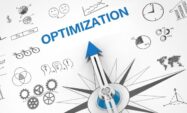SAP Supply Chain Planning
Filter By
Browse By
- SAP Analytics and AI
- SAP Application Development and Integration
- All SAP Application Development and Integration
- SAP ABAP
- SAP ABAP Development Tools
- SAP ABAP Test Cockpit
- SAP API Management
- SAP BAPI
- SAP Basis
- SAP BRF
- SAP Business Application Studio
- SAP CMS
- SAP Design Studio
- SAP Development Tools
- SAP DevOps
- SAP EAI
- SAP EDI
- SAP Extension Suite
- SAP Fiori
- SAP Fiori Elements
- SAP Integration Suite
- SAP Low Code Application Development
- SAP Low Code Automation
- SAP Netweaver
- SAP Release Management
- SAP UI5
- SAP Web Application Server
- SAP Web IDE
- SAP Business Process Management
- SAP Center of Excellence
- SAP CIO
- SAP Customer Experience
- SAP Data and Data Management
- All SAP Data and Data Management
- SAP BW
- SAP BW/4HANA
- SAP Crystal Reporting
- SAP Data Archiving
- SAP Data Center
- SAP Data Governance
- SAP Data Integration
- SAP Data Migration
- SAP Data Quality
- SAP Data Services
- SAP Data Strategy
- SAP Data Visualization
- SAP Data Warehouse Cloud
- SAP DMS
- SAP Document Control
- SAP EIM
- SAP ETL
- SAP ETL Tools
- SAP HANA
- SAP HANA Administration
- SAP HANA Deployment Infrastructure
- SAP HANA Studio
- SAP Master Data
- SAP Master Data Governance
- SAP MDM
- SAP Enterprise Architect
- SAP Enterprise Asset Management
- SAP ERP
- SAP Finance
- All SAP Finance
- SAP Accounting
- SAP AR AP
- SAP Asset Accounting
- SAP Billing Systems
- SAP BPC
- SAP BRIM
- SAP Cash Management
- SAP Central Finance
- SAP Controlling
- SAP COPA
- SAP Cost Center Accounting
- SAP e-invoicing
- SAP FICO
- SAP Finance Automation
- SAP Financial Closing Cockpit
- SAP Financial Consolidation
- SAP Financial Planning
- SAP FX Risk
- SAP General Ledger
- SAP Global Tax Management
- SAP Hyperion
- SAP Order to Cash
- SAP Payment Processing
- SAP Profitability Analysis
- SAP Rebate Management
- SAP S/4HANA Finance
- SAP Universal Journal
- SAP Governance Risk and Compliance
- SAP Human Capital Management
- SAP Intelligent Technologies
- SAP Platform and Technology
- All SAP Platform and Technology
- SAP Business Technology Platform
- SAP Cloud Connector
- SAP Cloud Integration Platform
- SAP Cloud Migration
- SAP Cloud Platform
- SAP Cloud Providers
- SAP Cloud Strategy
- SAP Container Platform
- SAP Digital Asset Management
- SAP Digital Integration Hub
- SAP Digital Signature
- SAP HANA Enterprise Cloud
- SAP HEC
- SAP Hyperscalers
- SAP Infrastructure
- SAP Messaging
- SAP Smart Forms
- SAP Quality and Testing
- SAP Security
- SAP Spend Management
- SAP Supply Chain Management
- All SAP Supply Chain Management
- SAP APO
- SAP Asset Management
- SAP Business Network
- SAP Digital Manufacturing Cloud
- SAP Digital Twin
- SAP EWM
- SAP IBP
- SAP Inventory Management
- SAP Label Printing
- SAP Logistics
- SAP Manufacturing
- SAP Manufacturing Automation
- SAP MES
- SAP MII
- SAP MM
- SAP MRO
- SAP MRP
- SAP Order Management
- SAP Plant Maintenance
- SAP PLM
- SAP Production Planning
- SAP S&OP
- SAP SD
- SAP SPM
- SAP Supply Chain Planning
- SAP Track and Trace
- SAP Transportation Management
- SAP System Administration
Supply Chain Management: SAP Supply Chain Planning
The art of orchestrating supply chain planning can be intricate. Unforeseen changes in supply, demand, and market changes are a test in agility. The ability to synchronize planning for sustainable growth is the key to building a resilient supply chain.
Supply Chain Planning Defined
Supply chain planning (SCP) is a forward-looking process. It is coordinating assets to optimize the delivery of goods, services, and information from suppliers to consumers. Organizations can leverage solutions to help navigate the complexities of planning and orchestrating supply chain operations flawlessly. SAP Integrated Business Planning (IBP) is powered by SAP S/4HANA memory and is a cloud-based planning software for supply chain management. IBP is a process for aligning a company’s business goals across operational functional areas.
Supply Chain Management: SAP Supply Chain Planning
The art of orchestrating supply chain planning can be intricate. Unforeseen changes in supply, demand, and market changes are a test in agility. The ability to synchronize planning for sustainable growth is the key to building a resilient supply chain.
Supply Chain Planning Defined
Supply chain planning (SCP) is a forward-looking process. It is coordinating assets to optimize the delivery of goods, services, and information from suppliers to consumers. Organizations can leverage solutions to help navigate the complexities of planning and orchestrating supply chain operations flawlessly. SAP Integrated Business Planning (IBP) is powered by SAP S/4HANA memory and is a cloud-based planning software for supply chain management. IBP is a process for aligning a company’s business goals across operational functional areas.
Key integration elements are:
- Supply and demand
- Finance and Operations
- Functions and business processes
- Strategy outcomes
- Non-financial measures
- Cash flow, costs, and revenues.
A structured process that comes from an IBP approach enables companies to make better informed and fact-based decisions. It provides planning, what-if scenario capabilities, and real-time demand commitments, considering constraints. Increased visibility enables companies to incorporate insights from supply chain projections, financial projects, and strategic plans. There are unmatched benefits of IBP for SAP Supply Chain Planning, like optimization of logistics, improved cross-functional collaboration, planning agility, risk mitigation, and improved forecast accuracy.
SAP Supply Chain Planning yields several benefits:
- Decreased costs
- Increased profits
- Reduction in delays
- Improved efficiency
- Increase in output
- Better cooperation.
Vendor partners that can offer software solutions or operational intelligence include – SAP, Reveal or Gib.
Key Considerations for SAPinsiders are:
- Video Q&A with Eric Jones from GIB on Connecting the Dots Between Supply Chain Planning and Execution. Learn how to tame many supply chain complexities with end-to-end -supply chain solutions by watching this video. The discussion gives a perspective on why supply chain planning tools are an imperative in today’s highly complex supply chains.
- Demand Planning Alerts Increase the Accuracy of your Forecasts. David Ducray explains that demand planners are often faced with converting large amounts of data into an accurate forecast. Review different ways to spot trends and errors in data by using alerts to help you create a more accurate forecast. Allow planners the ability to manage by exception.
- Meeting Demand with a Constrained Supply Using Product Allocation in SAP APO Global ATP. Alok Jaiswal reviews the process flow of how product allocation can be used in SAP Advanced Planning and Optimization (SAP APO). This utilizes global available-to-promise (ATP) to meet customer requirements by managing the supply of scarce products.
75 results
-

- SAP Supply Chain Planning
 Premium
Premium
Supply Chain Optimization With Planning in the Cloud
Published: 03/June/2022
Reading time: 4 mins
The article discusses the critical role of cloud-based analytics in supply chain optimization across industries. This content is for Mastering SAP Premium Access members only.Log In Join Now
-

Evolution of Supply Chain Planning Systems
Published: 03/June/2022
Reading time: 2 mins
In this article, we discuss what exactly does the word evolution mean in the parlance of supply chain planning solutions. This content is for Mastering SAP Premium Access members only.Log In Join Now
-

Russia Ukraine War Brings Increased Complexity to Supply Chains
Published: 31/March/2022
Reading time: 3 mins
Russia’s invasion of Ukraine in February 2022, is adding to existing challenges in global supply chains. Tensions continue to rise as new sanctions are levied. Industry experts predict long-term supply chain impacts from this geopolitical conflict. For supply chains, it is yet another global event requiring their companies to pivot in the face of adversity. The…
-
-

Retail Industry Grows Despite COVID-19 Supply Chain Challenges
Published: 19/January/2022
Reading time: 2 mins
Despite the recent surge in COVID-19 cases and supply chain disruptions, the retail industry grew a robust 14.1% during November and December to $886.7 billion, according to the National Retail Federation (NRF). The strong growth encouraged NRF to hold its annual conference in person at the Javits Convention Center in New York this week. The…
-

Leveraging Theory of Constraints in Supply Chain Control Towers
Published: 18/August/2021
Reading time: 3 mins
Theory of Constraints is widely hailed as one of the most widely leveraged process optimization and continuous improvement method. Proposed by Prof. Goldratt, the crux of this theory is that the pace or the performance of the process is determined by the bottleneck. To improve the end-to-end process, you need to identify the bottleneck and…
-

Five Stages of Disruption: A Digital Supply Chain perspective
Published: 02/August/2021
Reading time: 4 mins
By Kumar Singh, Research Director, SAPinsider A disruptive technology will not be “disruptive” during all stages of its life While every other provider, vendor, and “expert” is shouting about digital…
-

Democratizing AI Within Your Supply Chain Leadership
Published: 21/July/2021
Reading time: 5 mins
By Kumar Singh, Research Director, Automation & Analytics, SAPinsider Supply Chains may never become fully autonomous but…. Supply chains of the future will be increasingly driven by algorithms. Key planning processes will be significantly automated and managed by Algorithms. In a nutshell, supply chains of the future will be part of mathematical corporations -corporations…
-
-

Data Scientist Ants and the Power of Heuristics in Building Smart Supply Chains
Published: 17/July/2021
Reading time: 5 mins
By Kumar Singh, Research Director, Automation & Analytics, SAPinsider Delivery Drones and Ants- What is the connection ? You probably read the news last year regarding FAA approval of drone deliveries. Now that an easy action item box has been checked ,the next step will be to test the real execution. Drone deliveries, from…
-

Why AI Needs to Play a Critical Role in America’s Supply Chain Innovation Capabilities
Published: 14/July/2021
Reading time: 7 mins
By Kumar Singh, Research Director, Automation and Analytics, SAPinsider The Tomorrow War In the movie “The Tomorrow War”, people from the future (2051) time travel to 2030 to ask for help. In 2051, our planet is being overrun by invading aliens from outer space and with their numbers dwindling rapidly, humans are bound to lose…
-

- SAP Supply Chain Planning
 Premium
Premium
Hyperscalers Focus on Supply Chain Platforms
Published: 07/July/2021
Reading time: 5 mins
Supply chain planning solutions space has been a crowded and competitive segment for decades. As technology capabilities progress, we see more and more entrants in the segment, trying to compete with established players. However, a key fact of this space is that while bells and whistles may differ, the core features and functionalities remain the…
Become a Member
Unlimited access to thousands of resources for SAP-specific expertise that can only be found here.
Upcoming Events
Related Vendors
Your request has been successfully sent

